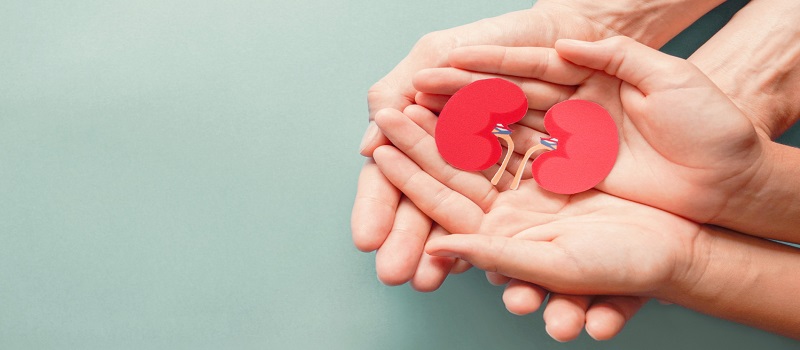How Long Does it Take to Pass a Kidney Stone?
Kidney stones are solid masses that are formed when chemicals and minerals in the urine harden into a crystal. Usually, these chemicals and minerals such as uric acid and kidney stones are always present at low levels. The excess levels get flushed out along with the urine but in some cases, it can form too many stones where passing a kidney stone can be a crucial task.
Causes of kidney stones
Kidney stones have no known cause, but health factors, family history, and lifestyle changes can increase the likelihood of developing them. For example:
- Consuming food with high content of protein
- Intaking too much vitamin D
- Dehydration
- Obesity
- Metabolic disorder
- Gout or inflammatory bowel disease
Symptoms of kidney stones
The symptoms of kidney stones may have variations from person to person.
- Severe or sudden pain in the back and sides
- Blood in your urine
- Frequent urination
- Pain while urinating
- Foul-smelling or cloudy urine
- Urinating in small amount or no urination at all

Kidney stones are formed in the kidney and then it slowly moves into the ureter. The ureter is the tube that helps in connecting the kidney to the bladder and also allows urine to flow. The small stones can pass naturally, but passing a kidney stone that is bigger gets stuck in the ureter, causing the above symptoms.
How can I Prevent Kidney Stones?
There are multiple ways of diminishing your gamble of kidney stones, including:
Drink Water: Drink no less than six to eight 8-ounce glasses consistently (around 64 ounces). Remaining hydrated assists you with peeing on a more regular basis, which makes a difference “flush away” the development of the substances that cause kidney stones.
Limit Salt: Eat less sodium. You might need to interface with a dietician for assist with arranging what food sources you eat.
Get more fit: On the off chance that you’re overweight, attempt to lose a few pounds. Converse with your medical care supplier about an optimal weight.
Take Remedies: Your medical care supplier might recommend a few meds that assist with forestalling kidney stones. The kind of prescription might rely upon the sort of stones you get.
Duration taken for passing a kidney stone
There are two main factors that determine passing a kidney stone.
Size
Stones which are smaller than 4mm can pass on their own by 80% with an average of 31 days.
- Passing a kidney stone is difficult when the size of the kidney stone is 4-6mm. For this, medication is must but around 60% of them pass naturally with an average of 45 days.
- Stones which are larger than 6mm need comprehensive medical treatment because only around 20% pass naturally. Also, it can take more than a year to pass where immediate treatment is required.
Location
While size is a major factor, stone location in the ureter also makes a huge difference.
- Stones which are at the end of the ureter rather than the end attached to the kidney are more likely to pass on their own. About 79% of passing a kidney stone on its own is made possible if it gets attached in this manner.
- About 48% of the stones that are in the end of the ureter closer to the kidney pass without any medical treatment.
What’s the viewpoint for kidney stones?
The viewpoint for kidney stones is exceptionally sure, in spite of the fact that there is a gamble of repeat (the stones returning). Numerous kidney stones disregard individually without requiring treatment. Drugs and careful medicines to eliminate bigger kidney stones are for the most part extremely fruitful and include little recuperation time.
Stages of passing a kidney stone
The following are the stages to make you understand what to expect and how to overcome or minimise the pain while passing a kidney stone.
Stage 1
The formation of kidney stones is usually a painless process. Most people will get to know that the stone is formed only when they detach from the inner wall of the kidney. The symptoms can include severe pain, fever, chills, blood in the urine, on and off pains when the kidney spasms try to get rid of the stone from inside the kidney.
If you are at this stage the spasms can be between 1-4 times an hour. It occurs until the stones get passed into the ureter. After the kidney stones have moved on, you can be relaxed as you have passed the worst part.
Stage 2
When the stone has entered the ureter which is nothing but the tube that connects the kidneys to the bladder. Although the worst part has passed, this stage of passing a kidney stone can still be incredibly painful.
The ureters inside diameter can be between 2-3mm wide. Compared to stage 1 where the pain was intense, stage 2 has a throbbing pain as the kidney stones scrape their way through the urinary system.
Stage 3
After kidney stones enter the bladder there will not be much pain than before. You’ll feel extreme pressure instead of pain. Your body will want to expel the stone where you may feel like urinating every 5 minutes.
It is not straightforward though. While passing a kidney stone, it may get stuck at the entrance of the urethra, stopping the flow of urine. You have to wait for 5-10 minutes for the stone to return to the bladder before giving it a try.

Stage 4
This is the last stage of passing a kidney stone where it requires a little more effort.
When the kidney stone gets far when the urethra opens, you have to really push it so hard. Keep pushing hard until the stone shoots out into the toilet’s bowl.
There are four types of kidney stones such as calcium stones, cystine stones, struvite stones, and uric acid stones. Changing to a healthy diet and keeping yourself hydrated is most important to increase the urine flow and reduce stone formation.
